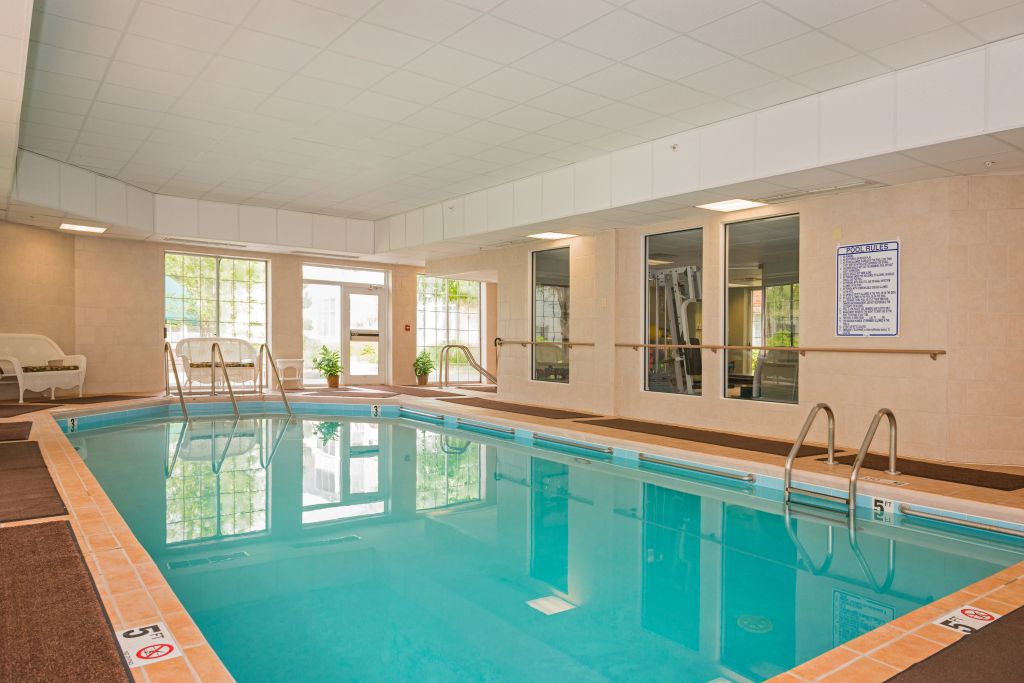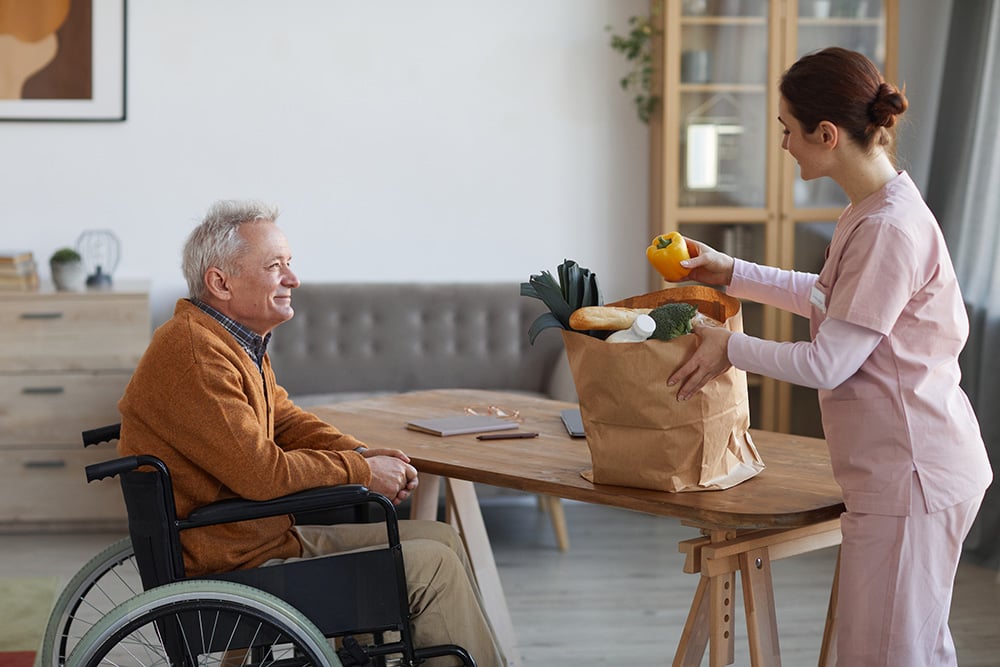Services for Senior Care: A Comprehensive Guide to Supporting Independence and Quality of Life
Key Takeaways For many older adults, staying independent and comfortable in their own home is the dream for how they’d…

Key Takeaways
- Professional in-home care services help seniors maintain independence and quality of life in their own homes
- Services range from personal care assistance to specialized memory care, transportation, and companionship
- Government programs like Medicaid waivers, PACE, and state aging services provide financial assistance for eligible seniors
- Family caregiver support programs offer respite care, counseling, and resources to prevent burnout
- Comprehensive care coordination ensures seniors receive personalized, dignified support tailored to their specific needs
For many older adults, staying independent and comfortable in their own home is the dream for how they’d like to age. But as needs shift—maybe from just a little help here and there to more ongoing support—it can be tough for families and seniors to figure out where to start. The good news? There are more options than ever before, all designed to help you age in place safely, with dignity and a good quality of life.
Whether you’re a loved one looking into care for a parent, or you’re exploring services for yourself, learning about the wide range of support available can really ease the process. From in-home care and community resources to programs that help with costs, there’s something for just about every situation. This guide is here to help you make sense of it all and feel more confident about your next steps.

Professional In-Home Care Services
Professional in-home care represents one of the most flexible and personalized approaches to services for senior care. These providers offer comprehensive support that allows older adults to remain in their own homes while receiving the assistance they need to thrive safely and comfortably.
Help with Everyday Tasks
When it comes to aging at home, personal care assistance is often the first kind of help many people consider. This type of support includes everyday tasks like bathing, getting dressed, taking medications, and moving around safely. Caregivers are specially trained to assist with these needs in a respectful, compassionate way that helps older adults feel comfortable and dignified. It’s a wonderful solution for those who want to stay independent but don’t have nearby family to lend a hand.
Companionship Makes a Difference
Companionship services are another key piece of the puzzle. They focus on keeping older adults socially connected and emotionally supported—things that are just as important as physical care. Whether it’s enjoying a favorite hobby together, chatting over a cup of tea, or going for a walk, having a friendly visitor can brighten a senior’s day and lift their spirits.
Specialized Support for Complex Needs
Some older adults need more specialized support due to conditions like Alzheimer’s, dementia, or other chronic health issues. Thankfully, many care providers now offer programs tailored specifically to these needs. Caregivers receive extra training in proven methods like the Positive Approach™ to Care, which can make a big difference in managing symptoms and helping seniors stay as engaged and independent as possible.
For families who need more around-the-clock help, there are options for 24-hour care. These services might include overnight assistance or live-in caregivers who provide continuous support. It’s a comforting choice for those who want the peace of mind that comes with constant care, while still enjoying the familiarity of home.
No matter the level of support needed, today’s in-home care services are designed to meet seniors where they are—with compassion, flexibility, and the goal of helping them live well at home for as long as possible.
Daily Living Support Services

In-home senior care goes far beyond helping with personal tasks—it also includes many of the day-to-day services that make independent living more manageable and enjoyable. These practical supports help older adults keep their homes running smoothly, stay nourished, and continue participating in their communities. With the right help, seniors can maintain their lifestyle and confidence, even as their needs change.
Household Help That Makes Life Easier
One of the biggest areas of support is household management. Services like light housekeeping, laundry, and even pet care can make a big difference in daily comfort and safety. A tidy, well-organized home isn’t just pleasant—it helps reduce falls and creates a sense of control and pride. Whether it’s weekly cleanings or occasional help, these services can be scheduled to match what works best for each person.
Nutritious Meals and Friendly Company
Meal prep and nutrition are also key parts of staying healthy at home. Caregivers can help by grocery shopping, preparing meals tailored to dietary needs, or even sitting down to share a meal. For seniors with conditions like diabetes or heart issues, this kind of thoughtful nutrition support can be a game-changer. It ensures they’re eating well—and not skipping meals just because cooking feels like too much work.
Staying Connected with Transportation Services
Getting around town can also be a challenge, especially when driving is no longer an option. Transportation services help fill this gap, offering rides to doctor’s appointments, shopping trips, or community events. Having reliable transportation means seniors can stay connected, keep up with their health, and enjoy life outside the home—all while maintaining their independence.
Medication Reminders and Health Monitoring
Managing medications is another area where a little help goes a long way. Caregivers can remind seniors to take their medications, help organize pill boxes, and keep an eye out for side effects or health changes. This type of support offers peace of mind for families and helps prevent mix-ups that can lead to serious complications.
Home Safety for Peace of Mind
Safety at home is also a top priority. Many providers offer home safety assessments to spot and fix potential hazards before they cause trouble. Things like installing grab bars, improving lighting, or clearing cluttered walkways can significantly reduce the risk of falls and injuries. Small changes like these often make a big difference in keeping seniors safe and comfortable.
Altogether, these practical services work together to support aging in place with dignity and ease. Whether it’s keeping the home in order, eating nutritious meals, staying socially active, or ensuring safety, today’s senior care options make it easier for older adults to live well—and for families to feel reassured every step of the way.
Government-Funded Senior Care Programs

Expanding Access Through Government Support
Understanding government-funded options for services for senior care can significantly expand access to needed support while reducing financial burden on families. These programs operate at federal, state, and local levels to provide comprehensive assistance to eligible seniors.
Medicaid Waivers for Home-Based Care
Medicaid waiver programs represent one of the most valuable resources for seniors requiring nursing home level care but preferring to remain in their own homes. These waivers allow states to use Medicaid funds for home and community based services that would traditionally only be available in institutional settings. Services covered often include personal care, homemaker assistance, adult day programs, and respite care for family caregivers.
Comprehensive Services Through PACE
The Program of All Inclusive Care for the Elderly (PACE) operates in 28 states and provides integrated Medicare and Medicaid benefits for seniors who qualify for nursing home care. PACE programs coordinate all aspects of a participant’s healthcare and social services, from medical care to transportation, with the goal of keeping seniors in their communities as long as safely possible.
State-Funded Aging Services
State aging services divisions in all 50 states, including North Carolina, administer programs funded through the Older Americans Act, providing home and community-based services to older Americans regardless of income. These programs typically include congregate and home-delivered meals, transportation, homemaker services, and information and referral assistance. Many states also offer additional programs using state funding to expand services beyond federal requirements.
Nutrition Assistance for Healthy Living
The Supplemental Nutrition Assistance Program (SNAP) helps eligible seniors afford nutritious food, while specialized meal delivery programs target homebound older adults. These nutrition programs recognize that proper diet is fundamental to maintaining health and independence.
Free Help Navigating Health Insurance
State Health Insurance Assistance Program (SHIP) counselors provide free, unbiased guidance on Medicare options, long-term care insurance, and other benefits. This counseling service helps seniors and families navigate complex insurance decisions and maximize available coverage.
Understanding Eligibility and Getting Help
Eligibility requirements for government assistance programs vary but typically consider factors like income, assets, functional ability, and medical necessity. Application processes can be complex, but Area Agencies on Aging in every community provide free assistance with applications and ongoing program management.

Family Caregiver Support Services
Family caregivers play a vital role in the lives of older adults, often providing the majority of long-term care across the country. Many juggle this responsibility alongside their own health, jobs, and family duties, which can quickly become overwhelming. That’s why it’s so important that senior care services also include strong support for these dedicated individuals.
Taking a Break with Respite Care
One of the most valuable resources available is respite care. This temporary care option gives family caregivers the chance to take a break—whether for work, a medical appointment, or simply some much-needed personal time. Respite care can happen right at home with professional caregivers, at adult day centers, or through short-term stays in residential facilities. Taking a break helps caregivers recharge and sustain their ability to provide quality care over time.
Emotional Support Through Counseling
Counseling and support services can also be a lifeline for caregivers. Working with professionals who understand the emotional challenges of caregiving can help family members manage stress, cope with change, and make thoughtful decisions about care transitions. These services help caregivers feel heard, supported, and less alone in their experience.
Learning Through Caregiver Training
Training and education programs are another powerful tool. Learning proper techniques—like safe lifting or how to give medications—can improve safety for both the caregiver and their loved one. Many programs also cover specific topics like dementia care or home safety updates, and they’re often available online or through local community centers, making them easy to access.

Connection Through Support Groups
Support groups offer something that’s hard to find elsewhere: connection with others who truly understand. These groups give caregivers a place to share stories, swap advice, and feel encouraged by people going through similar situations. Whether in person or online, support groups can be a comforting part of a caregiver’s routine.
Being Ready with Backup Care
Emergency backup care is another important piece of the puzzle. Life can be unpredictable, and having a plan in place for times when the primary caregiver isn’t available offers reassurance to everyone involved. These services step in during illness, travel, or emergencies, keeping care consistent and avoiding unnecessary stress.
Together, these resources form a supportive safety net for caregivers—ensuring they’re not just giving care, but also receiving it. When family caregivers feel supported, the entire care arrangement becomes more sustainable, more balanced, and better for both the caregiver and their loved one.
Specialized Senior Care Options

Evolving Approaches for Specialized Senior Care
As the understanding of aging-related conditions has evolved, services for senior care have developed increasingly sophisticated approaches to specialized needs. These targeted programs provide evidence-based interventions that can significantly improve outcomes for seniors with specific conditions.
Supportive Strategies for Cognitive Impairments
Memory care services utilize specialized approaches for seniors with Alzheimer’s disease, dementia, and other cognitive impairments. Professional providers employ evidence-based techniques like the Positive Approach™ to Care, which focuses on understanding and supporting the person behind the diagnosis. These programs emphasize maintaining dignity, reducing anxiety, and preserving remaining abilities while providing necessary safety and supervision.
Managing Chronic Conditions at Home
Chronic disease management programs support seniors dealing with conditions like diabetes, heart disease, and COPD. These services coordinate with healthcare providers to monitor symptoms, manage medications, support lifestyle modifications, and prevent complications that could lead to hospitalization. The goal is to help seniors maintain the best possible quality of life while managing complex health conditions.
Care That Supports Safe Recovery
Post-hospital discharge care and rehabilitation support help seniors transition safely from hospital to home. These programs provide skilled nursing care, physical therapy, occupational therapy, and other services needed for recovery. Proper discharge planning and follow-up care can prevent readmissions and support faster, more complete recovery.
Compassionate End-of-Life Care
End-of-life and hospice care coordination ensures that seniors with terminal illnesses receive compassionate, dignified care that honors their wishes and values. These programs focus on comfort, pain management, and emotional support for both the senior and their family members during difficult times.
Technology That Enhances Independence
Technology integration has become an increasingly important component of specialized care, with medical alert systems, health monitoring devices, and medication management tools enhancing safety and enabling more independent living. These technologies can provide peace of mind for families while supporting seniors’ desire to remain in their own homes.

Community and Social Support Programs
Social isolation can be a real challenge for seniors—impacting mental health, emotional well-being, and overall quality of life. That’s why community-based services are so invaluable. They offer more than just physical care—they provide a critical lifeline of connection, purpose, and joy.
Meaningful Connections Through Friendly Visits
Programs like senior companion and friendly visitor services pair trained volunteers with older adults who might be feeling a bit alone. These visits—whether in person or through video calls—build genuine relationships. Over time, volunteers often become trusted friends, offering companionship, conversation, and a reassuring presence that brings warmth into a senior’s day.
Daytime Engagement with Adult Day Programs
Adult day programs offer structured, engaging experiences in a welcoming setting. Participants enjoy group activities, meals, and gentle health checks—all while caregivers get some much-needed time for errands, work, or rest. Many centers also offer specialized memory-care programming and door-to-door transportation, adding convenience and peace of mind.
Events and Social Dining at Senior Centers
Senior centers and congregate meal programs bring people together through shared meals and activities like fitness classes, hobbies, workshops, and cultural events. These settings create natural opportunities for conversation and friendship, while nourishing both body and spirit. It’s not just a meal—it’s a moment of connection and community.
Keeping Wheels Turning with Transportation Services
Not being able to drive doesn’t have to mean missing out. Senior-friendly transportation services make it possible to keep attending appointments, going grocery shopping, and joining social or religious gatherings. Staying mobile helps seniors feel independent and active—rather than confined by their living situation.
Building Bridges Across Generations
Intergenerational programs are a wonderful way to bring young and old together through shared interests and experiences. Whether it’s seniors helping with reading or crafts, or teens teaching tech skills, these interactions brighten lives on both sides—offering connection, understanding, and a sense of mutual purpose.
A Community That Cares—and Engages
When we come together—through visits, day programs, social meals, transportation, or multigenerational projects—seniors enjoy a richer, more vibrant life. Each of these community-based services helps build confidence, emotional well-being, and a renewed sense of belonging. And for families, knowing these resources are available brings peace of mind and a shared sense of support.
Financial Assistance and Insurance Coverage

Understanding the financial landscape of services for senior care is crucial for making informed decisions about care options. Multiple funding sources exist, each with specific eligibility requirements and coverage limitations that families need to understand.
Medicare Can Be A Big Help
Medicare coverage for home health services provides funding for medically necessary skilled care, including skilled nursing, physical therapy, occupational therapy, and medical social work services. However, Medicare does not cover ongoing custodial care or assistance with activities of daily living unless skilled services are also required. Understanding these limitations helps families plan for coverage gaps.
Insurance Has Its Place
Long-term care insurance benefits can provide significant financial assistance for various services, including in-home care, adult day programs, and residential care options. Policies vary widely in their coverage, benefit periods, and elimination periods, so understanding the specific terms of any policy is crucial for effective planning.
Government Assistance Programs Provide Vital Help
Veterans benefits offer substantial support for qualifying service members and their spouses through programs administered by the Department of Veterans Affairs. The Aid and Attendance benefit can help pay for in-home care, adult day care, or assisted living for veterans and surviving spouses who meet eligibility requirements.
State prescription assistance programs help reduce medication costs for seniors who don’t qualify for other assistance programs but struggle with prescription expenses. These programs can provide significant savings on essential medications, freeing up resources for other care needs.
Self-directed care options provide cash benefits that allow seniors and families to purchase services directly rather than working through traditional provider agencies. These programs offer maximum flexibility but require families to take on additional responsibilities for hiring, training, and managing caregivers.
Sliding scale fee programs base costs on income and assets, making services more affordable for seniors with limited financial resources. Many nonprofit providers offer these programs, and some states fund sliding scale options for home and community-based services.

Choosing the Right Care Provider
Selecting appropriate services for senior care requires careful evaluation of both needs and provider capabilities. The process begins with a comprehensive assessment but extends to ongoing monitoring and adjustment as circumstances change.
Conducting comprehensive needs assessments helps determine the appropriate level and type of care required. Professional assessments typically evaluate physical health, cognitive function, safety risks, social supports, and personal preferences. This information forms the foundation for developing an effective care plan that addresses all aspects of well-being.
Evaluate, Interview and Understand
Evaluating provider credentials, licensing, and insurance coverage protects families from liability and ensures quality care. All professional care providers should carry appropriate liability insurance and workers’ compensation coverage. Home care agencies should be licensed according to state requirements, and individual caregivers should have current certifications for any specialized services they provide.
Interviewing potential caregivers allows families to assess personality compatibility and communication skills, which are just as important as technical qualifications. The relationship between caregiver and care recipient significantly impacts the success of any care arrangement, so taking time to find the right fit is crucial.
Understanding service agreements, costs, and cancellation policies prevents misunderstandings and protects both parties. Clear agreements should specify services provided, schedules, costs, payment terms, and procedures for making changes or ending services. Transparency in pricing and policies indicates a reputable provider.
Ongoing care plan reviews and adjustments ensure that services continue to meet changing needs. Regular reassessments help identify when additional services are needed or when current services should be modified. Effective providers welcome feedback and work collaboratively to adjust care plans as needed.
Quality assurance measures and satisfaction monitoring help maintain high standards of care over time. This might include regular check-ins with families, caregiver supervision, and formal satisfaction surveys. Providers who actively monitor and improve their services demonstrate commitment to quality care.
Emergency and Crisis Support Services
Even with the best plans in place, unexpected situations can still arise. For older adults and their families, knowing where to turn during a crisis can make all the difference. Whether it’s a medical emergency, a safety concern, or a sudden legal issue, there are services available to step in and provide immediate help—keeping seniors safe and supported when it matters most.
Adult Protective Services (APS) plays a key role in protecting vulnerable seniors. These state-run programs investigate concerns about abuse, neglect, or exploitation and can step in quickly when someone is at risk. They help with safety planning, emergency interventions, and continued monitoring. Learning how to contact APS and recognizing the warning signs of mistreatment can be essential in keeping older loved ones safe.
Fast Help When It’s Needed Most
Emergency response systems and medical alert technology have become vital tools for seniors living alone. From wearable pendants to smart devices that automatically detect falls, these systems offer quick access to help with just the push of a button—or no push at all. Having one in place can offer real peace of mind to both seniors and their families.
Mental health crisis services are also important and often overlooked. These programs are designed to support seniors dealing with depression, anxiety, or other urgent mental health needs. The providers understand the unique emotional challenges of aging and offer caring, age-appropriate support when it’s most needed.
Legal aid programs are another key resource. For seniors facing issues related to healthcare decisions, housing, benefits, or potential elder abuse, these services ensure they have someone on their side. Many communities offer legal assistance at little to no cost, especially for older adults with limited income.
Long-term care ombudsman programs serve as advocates for seniors in nursing homes, assisted living facilities, and other care settings. They help investigate complaints, resolve concerns, and push for improvements in the quality of care. It’s comforting to know that someone is out there looking out for your loved ones’ rights and well-being.
FAQ
How much do professional in-home care services typically cost, and what payment options are available?
Professional in-home care costs vary significantly by location, level of care needed, and provider type. Nationally, rates typically range from $20-35 per hour for companion care and $25-45 per hour for personal care assistance. Live-in care generally costs $200-350 per day. Payment options include private pay, long-term care insurance, veterans benefits, and in some cases, Medicaid waiver programs. Many providers offer sliding scale fees based on income, and some accept direct payment through self-directed care programs.
What is the difference between home health care and companion care services?
Home health care provides skilled medical services ordered by a physician, such as skilled nursing, physical therapy, or wound care, and is often covered by Medicare for eligible seniors. Companion care focuses on non-medical assistance with daily activities like bathing, meal preparation, medication reminders, and social interaction. Companion care is typically not covered by Medicare but may be funded through other sources like Medicaid waivers or private insurance.
How quickly can in-home care services be arranged in emergency situations?
Many professional care agencies can arrange emergency or rush services within 24-48 hours, though availability depends on local staffing and the level of care needed. Some agencies maintain on-call staff specifically for emergency situations. For immediate needs, families may need to use temporary staffing services while arranging longer-term care. Hospital discharge planners and Area Agencies on Aging can often assist with expedited service arrangements.
What background checks and training requirements do professional caregivers complete?
Professional caregivers typically undergo comprehensive background checks including criminal history, sex offender registry searches, and verification of previous employment. Training requirements vary by state but often include basic caregiving skills, safety procedures, infection control, and CPR certification. Specialized training may be required for dementia care, medication assistance, or other specific needs. Reputable agencies provide ongoing supervision and continuing education for their staff.
Can family members be hired and paid through government programs to provide care for their elderly relatives?
Many states offer self-directed care or consumer-directed services through Medicaid waiver programs that allow family members to be hired as paid caregivers. However, restrictions typically apply – spouses usually cannot be paid caregivers, and some programs exclude adult children who live in the same household. Veterans programs may also allow family members to be paid caregivers under certain circumstances. Eligibility and rules vary significantly by state and program, so consultation with local aging services is recommended.







